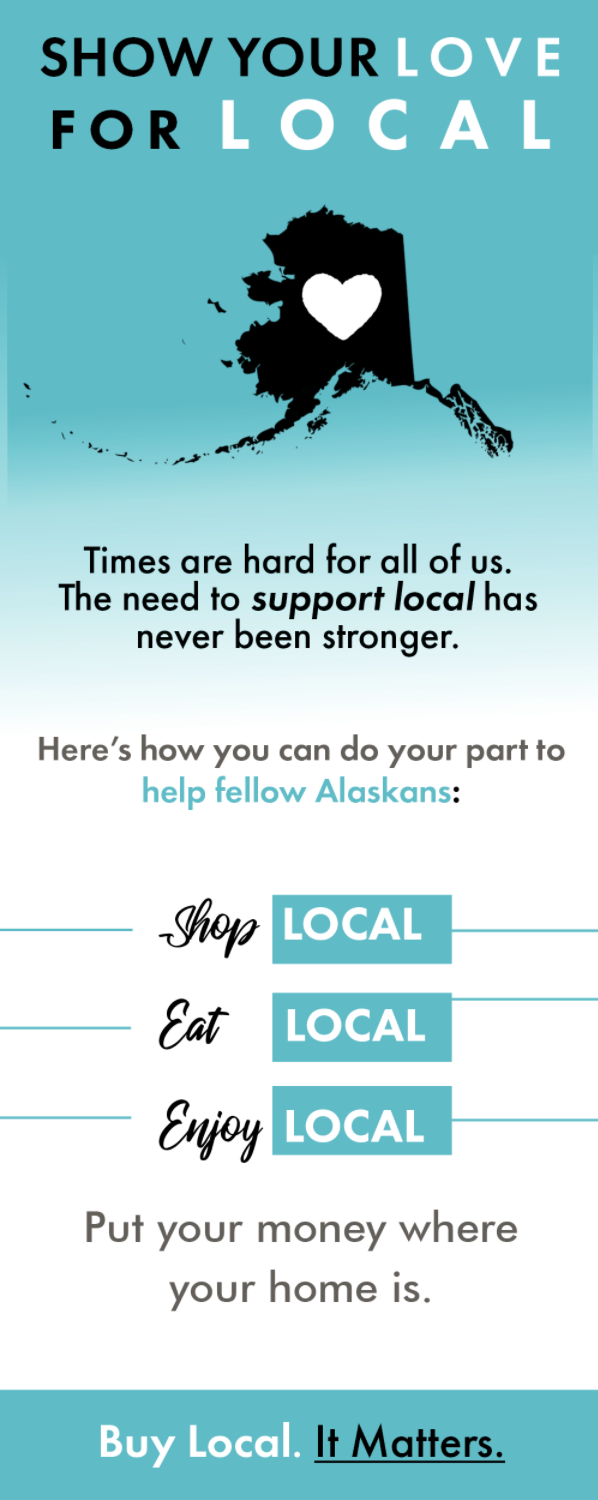10 breastfeeding myths (and their truths)
By Amy Newman

When it comes to feeding baby, Alaskans know breast is best. The Center for Disease Control and Prevention’s 2018 Breastfeeding Report card ranked Alaska first for the number of mothers who initiated breastfeeding (93.1 percent) and the number of babies exclusively breastfed through 3 and 6 months (65.3 percent and 42.1 percent, respectively).
Yet, despite those No. 1 rankings, there’s still a lot of misconceptions and misinformation when it comes to breastfeeding. To help separate fact from fiction, we spoke with lactation consultants to find out what advice to follow, and what advice you’re better off dumping. And remember that whether you breastfeed exclusively, supplement with formula, stop at 3 months or are still going strong at 3 years – or even chose not to breastfeed at all – what’s most important is that your baby is well-fed, taken care of and, above all else, loved.
Myth: Mama needs to drink milk (or eat a specific food, or take a supplement, etc.) to make milk.
Truth: Terriann Shell, a registered nurse and international board-certified lactation consultant based out of Big Lake, has heard it all when it comes to increasing milk supply, from drinking Mother’s Milk Tea (you’d need to drink two gallons to reap any benefits, she says) or blue Gatorade, to eating brewers’ yeast, oatmeal or lactation cookies (“They’re good nutrition,” she says of the cookies). But absent a medical or hormonal issue, Terriann says moms should return to the basics to increase their milk supply.
“Basically, feeding more, pumping more, is the first line of attack to make more milk,” she explains. “There’s not a lot of proof that most of these (other) things increase milk supply.” Pumping roughly an hour after feeding may also help, she adds. Whatever you try, she says, just remember that it can take up to two days to see an increase.
Myth: It’s normal for breastfeeding to hurt.
Truth: It’s normal for nipples to feel tender in the days following baby’s birth due to elevated hormone levels, Terriann says, but pain or damage is never normal. If the discomfort persists for more than a few days, it’s most likely a latching issue. In that case, she says, a lactation consultant can help rule out oral-anatomy issues, such as lip or tongue ties, that could be impeding baby’s ability to latch on. If everything is normal, they can offer tips to improve baby’s latch, she adds.
Myth: Poor milk supply is caused by stress.
Truth: This one is a yes and no, says Alison Muñoz, an international board-certified lactation consultant with Resource Center for Parents and Children in Fairbanks. Mothers have successfully breastfed through many different types of stressful situations, she says, so stress doesn’t really affect milk supply. Stress can, however, inhibit the let-down reflex, or milk ejection reflex, which can contribute to a perceived lack of supply, she explains.
Myth: Mom’s breast size determines whether she’ll produce enough milk.
Truth: In this case, bigger isn’t necessarily better. Mom’s breast size has nothing to do with the amount of milk produced, but it can affect how much milk the breasts can store, Alison explains. She likens it to drinking from a cup – a person with a small cup can drink just as much throughout the day as someone with a larger cup; they’ll just need to refill it more often.
“Maybe a mom with smaller breasts has to feed more often, but she can produce the same amount of milk as someone with a larger storage capacity,” she says.
Myth: Breastfeeding will make your boobs sag.
Truth: Don’t blame breastfeeding for those saggy boobs, Terriann says. The real culprits are gravity, age, and the accompanying loss of elasticity, which is exacerbated by the body’s release of the hormone relaxin during pregnancy. “So if you don’t want saggy breasts, don’t get pregnant,” she says with a laugh.
Myth: Babies cry when they’re hungry.
Truth: Babies will cry when they’re hungry, but they also send out a lot of cues to indicate it’s feeding time before they get to that point, Alison says. Learning to recognize those cues can decrease the tears.
“If mom is really attuned to her baby’s early hunger cues – looking around or moving their mouth – babies will actually cry less because parents are more aware of their early cues and feed them at the first sign of hunger,” she explains.
Myth: You’ll need to supplement your breastfed baby’s diet with formula.
Truth: Except for the most extreme cases where baby may need supplementation of additional minerals due to illness or prematurity, this myth has zero merit.
“The huge, huge, huge majority of women can produce enough milk, and it’s completely enough nourishment,” Alison says. “It’s superior nourishment.”
In fact, supplementation runs counter to the American Academy of Pediatrics recommendation that babies be exclusively breastfed for the first six months, Terriann says.
And don’t worry that baby’s desire for frequent feedings mean she isn’t getting enough, Terriann says. Breastmilk is digested much faster than formula, so breastfed babies usually require more frequent feedings than their formula-fed counterparts, typically eight to 12 times a day for breastfed infants, versus six to eight for bottle fed.
Myth: You shouldn’t breastfeed when you’re sick, and don’t take any medication while breastfeeding, either.
Truth: So long as you’re physically able, there’s no reason to stop breastfeeding just because you’re under the weather. In fact, taking a break from breastfeeding can have a negative impact on baby’s health.
“If a mom is sick, her body is already producing antibodies to fight that illness, and that’s what she’s giving her baby,” Alison explains. “Baby is already exposed to that illness, so if mom stops breastfeeding, the baby won’t get the antibodies. This way, baby may get a tiny bit sick, or not sick at all.”
As for medications, the majority are either completely safe for mom to take, or the amount passed on to baby through the milk is so minimal as to not be a cause for concern, she adds. Unlike pregnancy, where anything mom ingests is delivered straight to baby through the placenta, Alison says, the breasts act as a filter, keeping most of what mom eats out of the breastmilk.
Myth: You can’t get pregnant while breastfeeding.
Truth: Breastfeeding as a form of birth control can be somewhat effective, Terriann says, but only if baby is under 6 months, mom’s period hasn’t returned, and she’s breastfeeding on demand, with no pacifiers or bottles of any kind allowed. If you really want to avoid getting pregnant, however, Terriann recommends talking to your doctor about other forms of birth control.
Myth: You’ll have to wean baby from the breast once you return to work.
Truth: There’s no reason why mom can’t continue to breastfeed if she returns to work, if that’s what she chooses to do.
“It’s not an all or nothing thing,” Terriann says. “You can pump milk, or you can feed formula while you’re at work.”
Employers are also required by law to give breastfeeding moms time and space to pump, Alison adds. So, if you want to continue breastfeeding when you return to work, talk to your employer about workplace policies and accommodations so you know what to expect.








